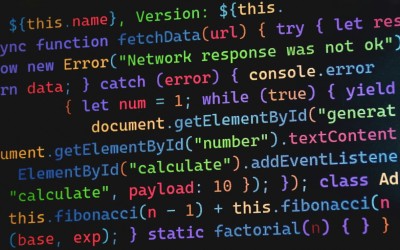In today’s digital world, content is everywhere. From news websites and blogs to social media posts, comments, and product reviews, the online space is flooded with words. But lately, something subtle but significant has changed in the way that content is being created and consumed. The rise of artificial intelligence tools—especially those capable of generating text—has introduced a new layer of complexity to how we interact with written content online. Many internet users are finding it harder than ever to tell whether what they're reading was written by a person or by an AI model. And while this might seem like a harmless detail on the surface, the inability to distinguish between human and machine-generated writing carries some very real consequences.
At the core of this confusion is the incredible sophistication of modern AI. Language models have improved to the point where they can mimic tone, rhythm, structure, and vocabulary choices that closely resemble how humans write. These tools are trained on massive datasets drawn from books, websites, forums, and all types of text-based communication, which means they understand context, mimic emotion, and even replicate stylistic flair with a high degree of accuracy. This makes them excellent at producing blog posts, product descriptions, news articles, and even social media comments that feel indistinguishable from something a human might write. And because most readers skim through content quickly, rarely pausing to dissect the subtle cues that might suggest artificial origin, this kind of writing often passes unnoticed.
What makes things more complicated is the fact that not all human writing is brilliant or unique. People make grammar mistakes, reuse phrases, and sometimes write in bland, repetitive ways. Ironically, many AI tools are programmed to write more clearly and concisely than the average person, making their output seem even more “professional” at times. In other cases, AIs intentionally include minor errors or natural-sounding imperfections to appear more human. This creates an odd scenario where machines are trying to sound like people, while people themselves are often not producing especially original or vivid content to begin with. The gap between the two is shrinking fast.
Another major reason internet users struggle to tell the difference is because of the sheer volume of content they’re exposed to every day. On platforms like Twitter, Reddit, or TikTok, users are constantly scrolling through feeds, reading dozens or even hundreds of short pieces of content in a sitting. In that environment, the expectation is speed over scrutiny. The human brain isn’t wired to pause and analyze whether a three-sentence comment was generated by a chatbot or a real person who quickly typed it out on their phone. So even when clues are present—like slightly off-kilter phrasing or overly generic opinions—they often go unnoticed.
The implications of this blending of human and AI voices are serious. One of the most immediate concerns is the erosion of trust. When you can’t tell whether a product review is from a real customer or an AI bot working on behalf of a company, how can you make informed choices? If an article about a sensitive political topic is AI-generated and subtly biased, readers may be manipulated without ever realizing it. In the realm of education, students using AI to write essays can mask their lack of understanding while appearing competent. And for creators, the challenge becomes even more personal. When AI can generate blog posts, poems, or even music lyrics in seconds, the lines between original thought and automated reproduction begin to blur, devaluing authentic creative expression.
Beyond individual trust, there’s a broader cultural issue. The internet has long been a place where people could share ideas, opinions, and experiences. But as AI-generated content becomes more widespread, the conversation itself starts to feel artificial. Instead of hearing diverse, authentic voices, users might find themselves engaging with a flood of synthetic commentary. This not only alters the quality of discourse, it also risks crowding out human contributions entirely. Forums that once thrived on genuine discussion may devolve into spaces filled with AI-generated noise, where engagement metrics matter more than meaningful dialogue.
Efforts to detect and label AI-generated content are already underway, but they’re not foolproof. Watermarking, metadata, and detection algorithms can help, but AI models evolve rapidly, often outpacing the tools designed to catch them. Some platforms are beginning to require content creators to disclose the use of AI, but enforcement is inconsistent, and bad actors can easily ignore these rules. For most users, the challenge remains deeply personal—navigating a digital landscape where appearances can be deceiving, and where the distinction between real and artificial grows thinner by the day.
What makes this especially unsettling is how easily AI can be used to manipulate. Whether it’s generating fake reviews to boost a product, crafting misleading articles that support a political agenda, or creating spammy social media posts to amplify disinformation, the potential for misuse is enormous. And if users can’t reliably tell the difference, they become vulnerable. In a world already filled with misinformation and polarization, the unchecked use of AI-generated content can intensify these problems rather than solve them.
It’s not all doom and gloom, of course. AI can also be used to assist writers, make content more accessible, and democratize creativity. But these benefits depend on transparency and responsible use. When AI is used ethically and clearly labeled, it can coexist with human writing in a way that enhances communication. But without that clarity, the internet risks becoming a maze of voices where you never quite know who—or what—is speaking to you.
The challenge, then, is not just about technology. It’s about awareness, literacy, and the values we bring to our digital interactions. As AI continues to grow in influence, the need for critical thinking becomes more urgent than ever. Users must learn to read with intention, to question sources, and to remain alert to the subtle signs of automation. Only then can we hope to preserve the integrity of online dialogue—and ensure that the human voice doesn’t get drowned out in the noise of the machines.




